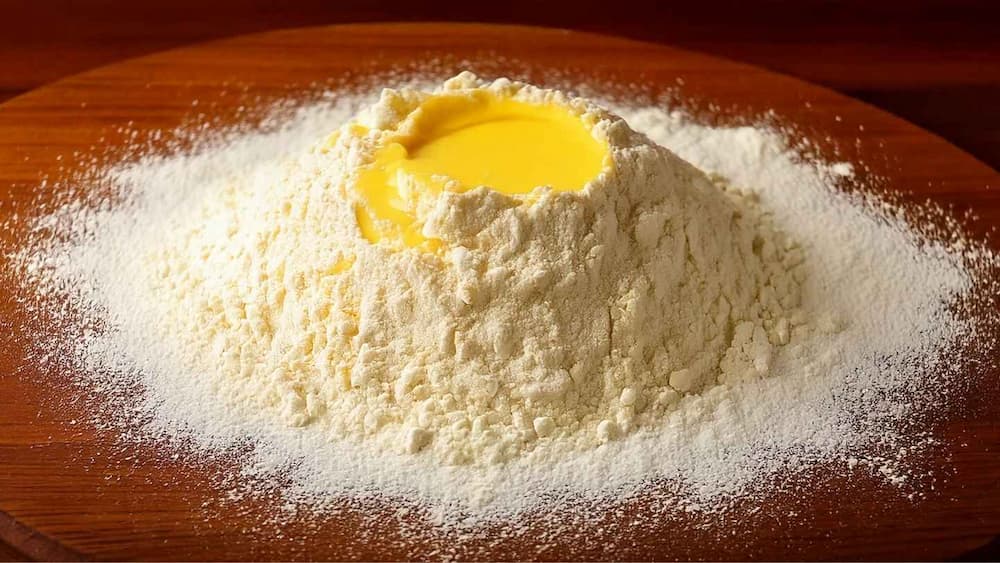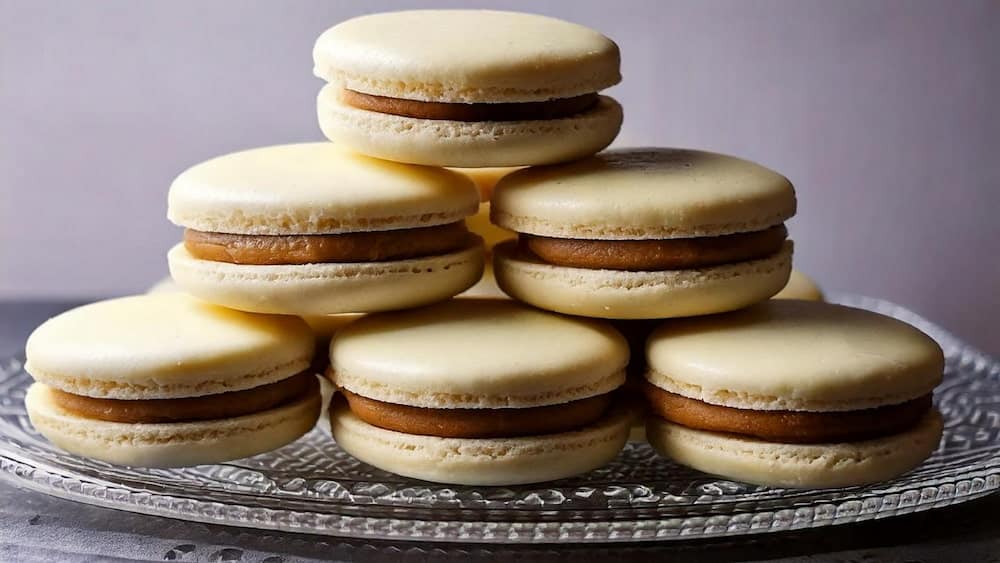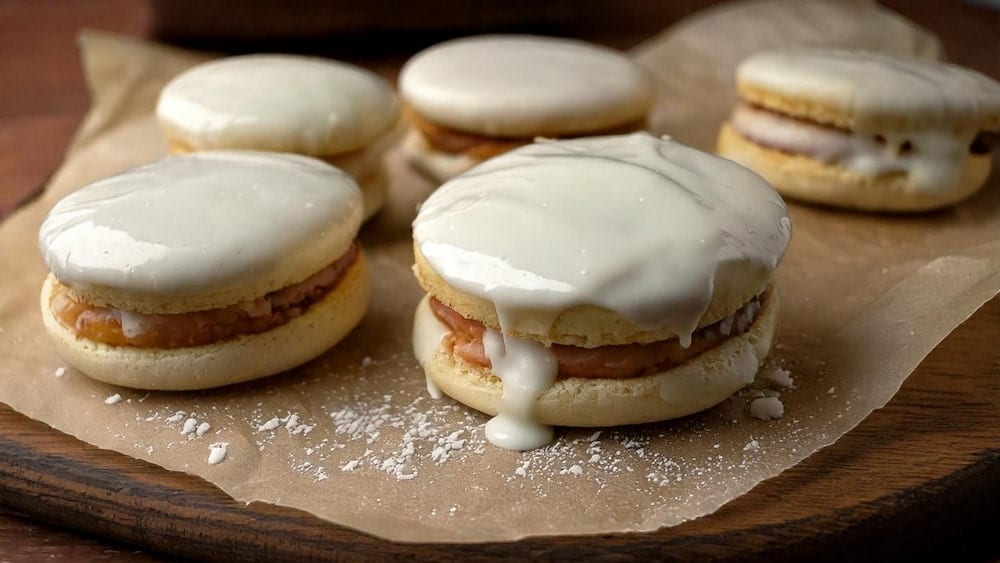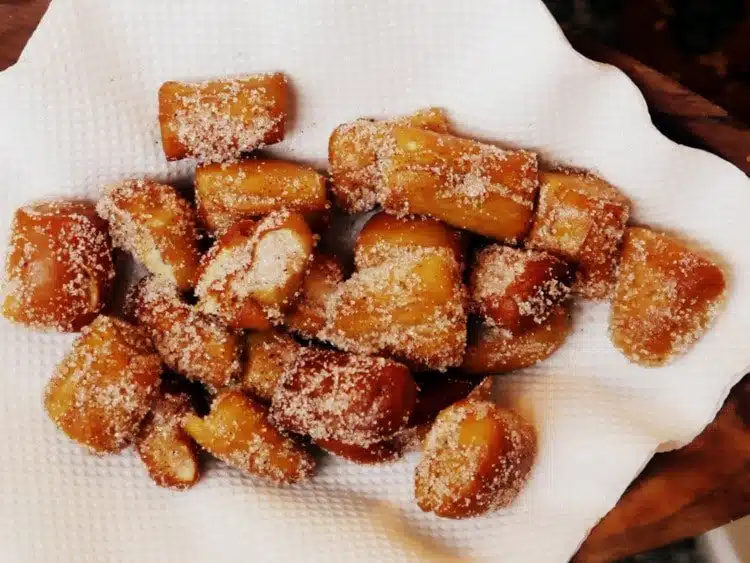Hello, how are you? In this new installment of Paulina Cocina, we're going to talk about alfajores from Córdoba, a delicacy from Argentine pastries, specifically from the province of Córdoba. Known for their airy texture , glazed coating, and fruit jam or dulce de leche filling .
What do you think about if, instead of waiting for that cousin who traveled to Córdoba to bring you a box of alfajores from Córdoba, we give you all the secrets and tips for making them at home? Plus, of course, the recipe for alfajores from Córdoba, so you can enjoy them as if you were in the beautiful mountains of Córdoba. Get your mate ready, because the recipe is coming soon!
Content table
About the alfajores from Córdoba
Alfajores from Córdoba are one of the jewels of Argentine pastry. Soft, sweet, covered in a distinctive glaze , and with a much airier texture than others, which makes them so unique.
While the original recipe for Córdoba alfajores is made with fruit jam , today they are also available with different fillings, such as dulce de leche or sweet potato jam. An important detail is that these mountain alfajores are not covered in chocolate like those from Mar del Plata . Their main charm lies in their softness and the layer of icing that covers them.
The origin and tradition of Córdoba alfajores
The origins of Córdoba's alfajores date back to the colonial era, when convents began making sweets inspired by recipes brought by the Spanish . Córdoba, with its baking tradition and nuns with a knack for sugar, saw the birth of this delicacy, which quickly became a local symbol.
But it wasn't until the late 19th and early 20th centuries that the production of these alfajores began to become popular throughout the country. Today, talking about a Córdoba alfajor is a must-have souvenir after any trip to the mountains.
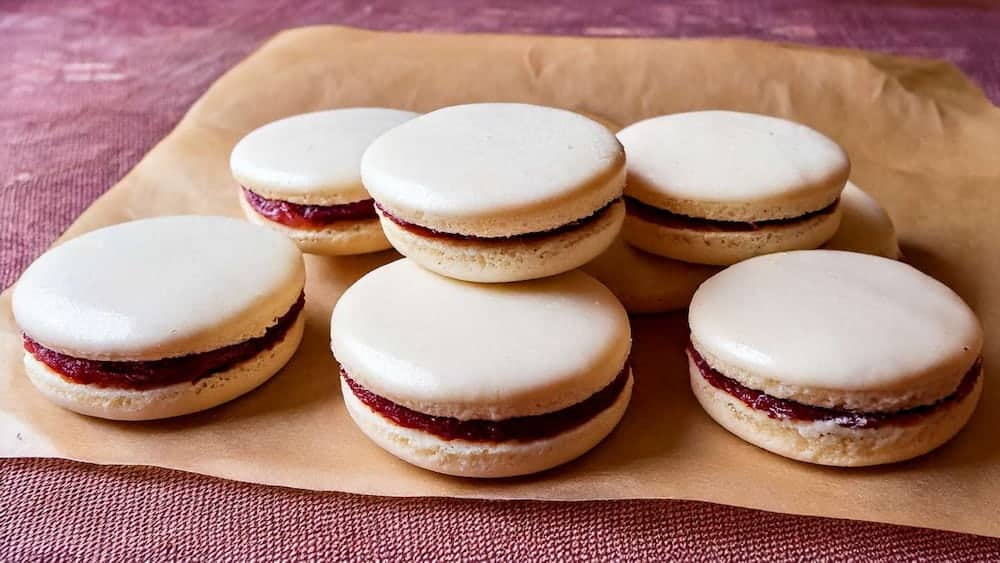
7 Features we love about Cordoban fruit alfajores
What sets Córdoba alfajores from the rest? Here are some of their main characteristics:
- Airy dough: Unlike others, Córdoba alfajores have a fluffier and lighter texture .
- Crunchy Icing: The sugar and lemon topping is one of their trademarks.
- Fruit filling: Although today there are versions with dulce de leche, the original recipe for alfajores from Córdoba includes quince jelly .
- Lemon and vanilla aroma: The dough is usually scented with these ingredients to give it a special touch.
- Generous size: They are not small bites, but alfajores with a good presence .
- Mountain origins: Its tradition comes from the convents and artisanal production of the mountains of Córdoba.
- A unique flavor: Neither too sweet nor heavy, these alfajores have a perfect balance between softness, sweetness and freshness .
Difference between Córdoba alfajores and other Argentine alfajores
While Argentina has an incredible variety of alfajores, the Córdoba alfajores have characteristics that make them unique:
- They do not contain chocolate: Unlike the Mar del Plata alfajores .
- They do not have a brittle dough: Like the Santa Fe alfajores .
- They are more airy: Than the traditional cornstarch alfajores .
- The icing: What distinguishes the alfajores from Córdoba at first glance.
- The filling: They are usually filled with fruit sweets rather than dulce de leche.
Traditional fillings for Córdoba alfajores
Although the recipe for alfajores from Córdoba is made with quince paste, there are other delicious variations:
- Sweet potato jam
- Caramel sauce
- Strawberry jam
- Peach jam
- Hazelnut cream
- Custard with a hint of lemon

9 Tips for Making the Authentic Alfajor from Córdoba
- Use 0000 flour: For a lighter texture.
- Do not over-knead: To prevent the dough from becoming tough.
- Perfume with lemon zest and vanilla essence: For a more authentic aroma.
- Don't overcook: The tops should be fairly white. There's no need to brown them.
- Let the lids cool well: Before filling them so they do not get damp.
- The icing should be quite runny: Depending on the weather, you can make royal icing with egg white if it's a very humid day; or a simple icing with powdered sugar, water, and lemon juice if the weather is dry.
- Dip the Córdoba alfajores in icing and drain off the excess: To achieve even coverage.
- Let the glaze dry at room temperature: Don't rush it by freezing it. A true Córdoba alfajor takes time. If possible, make them overnight.
- Store them in an airtight container: To retain their moisture and flavor.
Follow on Instagram ( here )
and on YouTube that I upload new recipes every week ( click here )
Original recipe for Córdoba alfajores
Yields: 10/12 alfajores
Preparation time: 1 hour and 30 minutes (including drying of the icing)
Ingredients
- 300 g of 0000 flour
- 100 g of corn starch
- 1 tsp baking soda
- 2 teaspoons of baking powder
- 150 g of sugar
- 2 tablespoons of honey
- 125 g of butter
- 3 yolks
- 1 whole egg
- 1 vain -essence cdita
- 1 lemon zest
- 250 g of quince or fruit jam
For the icing
- 150 g of powdered sugar
- 1/2 lemon juice
- 2 tablespoons of hot water
How to make Córdoban alfajores step by step
- In a bowl, place the sifted , cornstarch, baking soda, and baking powder. Set aside.
- In another bowl, beat the room temperature butter (softened) with the sugar until creamy.
- Add the yolks , the whole egg, the honey, the vanilla extract , and the lemon zest. Beat until smooth and creamy.
- Add the sifted dry ingredients and combine the dough without over-kneading, just until smooth.
- Roll out the dough on parchment paper or plastic wrap until it's 1 cm thick. Refrigerate for 30 minutes.
- Remove the dough from the refrigerator and let it rest for a few minutes to make it easier to handle. Cut out 5 cm diameter circles.
- Place them on a greased and floured baking sheet and bake in a preheated oven at 160-170°C for 8-10 minutes . They should not brown.
- Let the tapas cool completely before filling them with quince paste or fruit, making sure that the filling does not overflow.
- For the glaze, mix the powdered sugar with the lemon juice and hot water. Add the water little by little until you get the desired consistency.
- Coat the alfajores with the glaze and let them dry on a rack or a plate covered with parchment paper until they are completely firm (ideally overnight).
